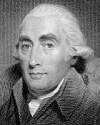
On 6 Dec 1799, Joseph Black died, a Scottish chemist and physicist who investigated and made quantitative experiments with a gas then known as “fixed air.” He also identified the latent (“hidden”) heat involved with a substance's change of state, realized the difference between heat and temperature, and measured specific heats. A chapter in Lives of Eminent and Illustrious Englishmen (1837) about Joseph Black gives more of the life and accomplishments of this now mostly overlooked scientist who contributed much in his era.
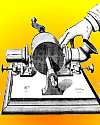
On 6 Dec 1877, Thomas Edison made the the first recording on his tinfoil phonograph, with the historic words “Mary had a little lamb.” The workmen gathering around the experiment were astonished to hear the playback of the voice so distinctly. His biographer wrote down Edison's account of that event. You can see an illustrated quote and Edison's description on this site's webpage for the Thomas Edison Quote - Tinfoil Phonograph - “Mary Had a Little Lamb.”(This is one of the first illustrated quotes added to this site in 2013.
There are more illustrated quotes, including from President Clinton on the human genome announcement, some Deforestation quotes (a couple by Prince Charles), Isaac Newton's famous “Playing on the Seashore” quote (Did He Really Say It?), and more. Each is accompanied by a description of its context.)
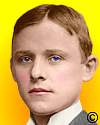
On 6 Dec 1863, Charles Martin Hall was born, the American chemist who while young invented the inexpensive electrolytic method to extract aluminium from its ore, which was immensely important to the commercial use of this metal. Today's book pick is: Made of aluminum;: A life of Charles Martin Hall, by Rosamond McPherson Young. Hall's accomplishment was made by dogged determination. His fascinating life story is exciting to read, and one that you should not miss. Hall's research—started in his garden woodshed as his laboratory—is a superb example of applied chemistry.
It is available from Amazon, typically about Used from $43.74. (As of earlier time of writing - subject to change.)
 | I have no doubt that we will be successful in harnessing the sun's energy. … If sunbeams were weapons of war, we would have had solar energy centuries ago. |
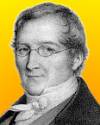 | In the natural sciences, and particularly in chemistry, generalities must come after the detailed knowledge of each fact and not before it. |
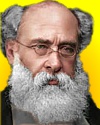 | It is very difficult to say nowadays where the suburbs of London come to an end and where the country begins. The railways, instead of enabling Londoners to live in the country have turned the countryside into a city. |
| Before you look at today's web page, see if you can answer some of these questions about the events that happened on this day. Some of the names are very familiar. Others will likely stump you. Tickle your curiosity with these questions, then check your answers on today's web page. | |
| Births | |
 | Charles Martin Hall, born 6 Dec 1863, was a young chemist experimenting in a woodshed when he succeeded in inventing a method for extracting a certain pure metal from its ore. He had the idea that if he could find a nonaqueous solvent for the metal's oxide (from its ore), he could produce the metal by electrolysis, using carbon electrodes and home-made batteries. Which rare mineral did his process use as the solvent of the ore, and which country was the main source of that mineral? |
 | Joseph Louis Gay-Lussac, born 6 Dec 1778, is best known for his work on gases. In 1805, by exploding together given volumes of hydrogen and oxygen, Gay-Lussac discovered they combined in ratio 2:1 by volume to form water. By 1808, after researches using other gases, he formulated his famous law. What is this law? |
| Deaths | |
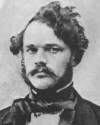 | Werner von Siemens (1816-1893) was a German scientist who played an important role in the development of an industry, first in Germany, then elsewhere in Europe and Asia. Siemens combined his engineering brilliance with entrepreneurial skills to develop a multinational business. Which industry did he develop as his first major success? |
 | Joseph Black (1728-1799) was a British chemist and physicist who experimented with “fixed air,” discovered bicarbonates, and also identified latent heat when he observed that ice melts without change of temperature. What gas did he call “fixed air”? |
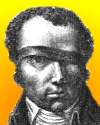 | Nicolas-Jacques Conté (1755-1805) was a French mechanical genius who developed the method on which the manufacture of a certain product continues in modern times. What is this product, still associated with his name? |
| Events | |
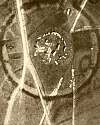 | On 6 Dec of a certain year, the first aerial photographs of Stonehenge - the first aerial photographs of any British archaeological monument - were displayed at the London premises of the Society of Antiquaries. They were probably taken about three months earlier. In which decade were the first aerial photos taken of Stonehenge, and how? |
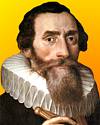 | In 1631, Johannes Kepler correctly predicted a transit of Venus across the face of the Sun. However, he did not observe it. The first observed transit of Venus took place eight years later, by Jeremiah Horrocks. Why did Kepler not observe the 1631 transit of Venus he predicted? |
Fast answers for the previous newsletter for December 5: pion (pi-meson) • spectral line fine-structure • radar • non-smear (“stays on you not on him”) kissproof lipstick • decade containing the year 1951 • Stillson.
 If you enjoy this newsletter, the website, or wish to offer encouragement or ideas, please send feedback by using your mail reader Reply button.
If you enjoy this newsletter, the website, or wish to offer encouragement or ideas, please send feedback by using your mail reader Reply button. Your click on a Facebook, StumbleUpon, or other social button on the site webpages is also a welcome sign of appreciation. Thank you for using them.
© This newsletter is copyright 2019 by todayinsci.com. Please respect the Webmaster's wishes and do not put copies online of the Newsletter — or any Today in Science History webpage. (If you already have done so, please remove them. Thank you.) Offline use in education is encouraged such as a printout on a bulletin board, or projected for classroom viewing. Online, descriptive links to our pages are welcomed, as these will provide a reader with the most recent revisions, additions and/or corrections of a webpage. For any other copyright questions, please contact the Webmaster by using your mail reader Reply button.
--
If you do not want to receive any more newsletters, Unsubscribe
To update your preferences and to unsubscribe visit this link
Executive Real Estate Business Class
-
"It was like a man with wings. It wasn't like anything you'd see on TV or in a monster movie." ...
About the publisher
Search This Blog
Blog Archive
-
▼
2020
(1542)
-
▼
December
(121)
- On This Day for December 31 - Ottawa made capital ...
- Newsletter for Thursday 31 December.
- December 31: The Battle of Quebec, a Rainy Day in ...
- All That's Interesting's 10 Most Popular Stories O...
- On This Day for December 30 - Union of Soviet Soci...
- Newsletter for Wednesday 30 December.
- December 30: Creation of the USSR, the All India M...
- Know Better in 2021
- On This Day for December 29 - U.S. annexation of T...
- Newsletter for Tuesday 29 December.
- December 29: On This Day in History
- The Best of HISTORY This Week
- The 10 Best History Uncovered Articles Of 2020
- On This Day for December 28 - Westminster Abbey op...
- Newsletter for Monday 28 December.
- December 28: Galileo Observes Neptune, Harriet Tub...
- The death of Thomas Becket | The history of New Year
- On This Day for December 27 - Dutch transfer of In...
- Newsletter for Sunday 27 December.
- December 27: On This Day in History
- On This Day for December 26 - Indian Ocean tsunami...
- Newsletter for Saturday 26 December.
- December 26: 1st Spanish Settlement in the New Wor...
- The Anti-Santa Who Takes Naughty Kids To Hell, The...
- On This Day for December 25 - Christmas celebrated...
- Newsletter for Friday 25 December.
- December 25: Andrew Johnson's Christmas Pardon, Ce...
- On This Day for December 24 - Treaty of Ghent, Joh...
- Newsletter for Thursday 24 December.
- December 24: The Treaty of Ghent, Author Stephenie...
- Demystified Video: Why Is Christmas in December?
- On This Day for December 23 - Aleksander Kwaśniews...
- December 23: Van Gogh's Madness, the Partition of ...
- On This Day for December 22 - Alfred Dreyfus sente...
- Newsletter for Tuesday 22 December.
- December 22: An Impenetrable Fortress Falls, the 1...
- On This Day for December 21 - Radium discovered by...
- December 21: The Soviet Union Ends, Life in the Tr...
- A history of Christmas – from Oliver Cromwell to V...
- On This Day for December 20 - Macau made an admini...
- Newsletter for Sunday 20 December.
- December 20: US Buys Louisiana, the Viet Cong and ...
- On This Day for December 19 - Articles of impeachm...
- Newsletter for Saturday 19 December.
- December 19: On This Day in History
- The Soviet Executioner Who Killed 7,000 Poles One ...
- On This Day for December 18 - Slavery abolished in...
- Newsletter for Friday 18 December.
- December 18: The Yuan Dynasty Begins, Nuclear Powe...
- The perfect gifts for the curious kids in your lives!
- On This Day for December 17 - Flight of the Wright...
- Newsletter for Thursday 17 December.
- December 17: Tamerlane Sacks Delhi, the Wright Bro...
- Demystified: Do We Really Use Only 10 Percent of O...
- On This Day for December 16 - Boston Tea Party, Ja...
- Newsletter for Wednesday 16 December.
- December 16: A Boston Tea Party, the Battle of the...
- Haunting Kennedy Assassination Photos That Most Pe...
- On This Day for December 15 - Premiere of Gone wit...
- Newsletter for Tuesday 15 December.
- December 15: Vandals, Mongols and the US Bill of R...
- On This Day for December 14 - Roald Amundsen's arr...
- Newsletter for Monday 14 December.
- December 14: Amundsen and Scott's Epic Race to the...
- On This Day for December 13 - New Zealand sighted,...
- Newsletter for Sunday 13 December.
- On This Day for December 12 - U.S. Supreme Court d...
- December 12: A Generous Manhattan Gift, Bush v. Go...
- How eels powered the medieval economy | The histor...
- 55 Of History's Creepiest Pictures And Their Distu...
- On This Day for December 11 - Abdication of King E...
- Newsletter for Friday 11 December.
- December 11: The Mayflower Pilgrims, an Abdication...
- UPDATED: Britannica Year in Review: Story of the Year
- Britannica Year in Review: Story of the Year
- On This Day for December 10 - Encyclopædia Britann...
- Newsletter for Thursday 10 December.
- December 10: Spanish-American War, Edward VIII and...
- Laurence Fishburne Hosts a New HISTORY Digital Series
- Demystified: What's the Difference Between Whiskey...
- On This Day for December 9 - Lech Wałęsa elected p...
- Newsletter for Wednesday 9 December.
- December 9: Belisarius Enters Rome, Lech Wałęsa El...
- What will you discover this Thursday?
- On This Day for December 8 - John Lennon fatally s...
- Newsletter for Tuesday 8 December.
- December 8: Lincoln's Amnesty Proclamation, the US...
- On This Day for December 7 - Pearl Harbor attack, ...
- Newsletter for Monday 7 December.
- December 7: Birth of Plastics, Infamy in Pearl Har...
- History books of the year | Historical board games...
- On This Day for December 6 - Irish Free State esta...
- Newsletter for Sunday 6 December.
- December 6: Mongols Destroy Kiev, Slavery Abolishe...
- On This Day for December 5 - Witchcraft condemned ...
- Newsletter for Saturday 5 December.
- December 5: Gold Rush in California, End of Prohib...
- HNN Newsletter: You are now unsubscribed
- 10 Medieval Execution Methods That Are The Definit...
- On This Day for December 4 - Ivan the Terrible pro...
-
▼
December
(121)
-
Blogroll
-
About
HistoryFact










0 comments:
Post a Comment